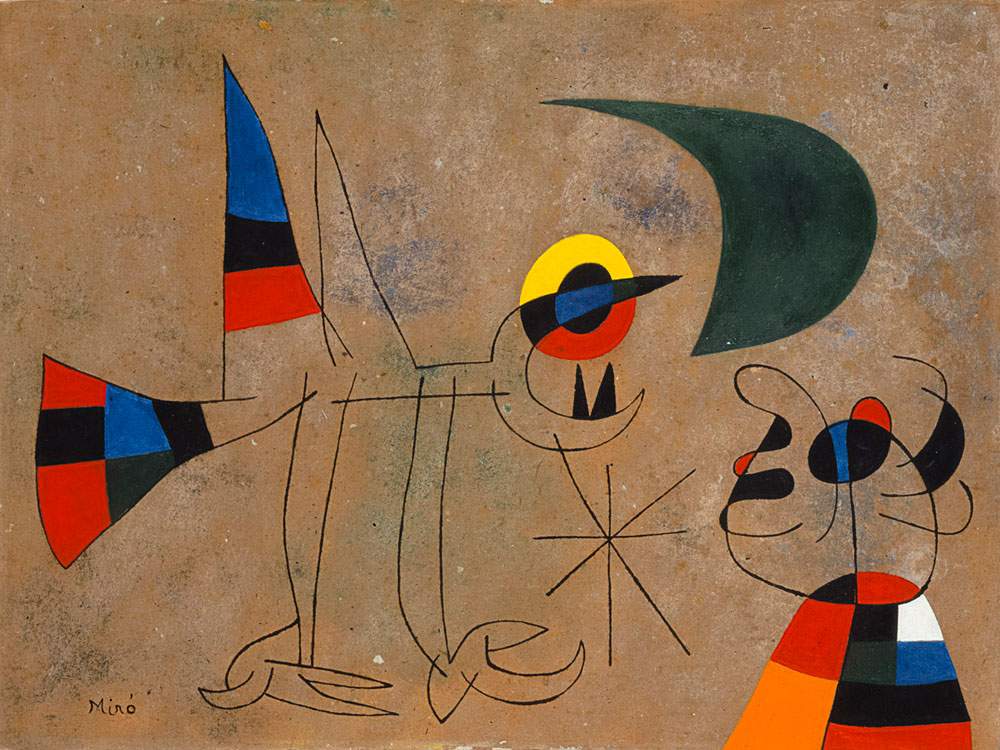This fall, the Magnani-Rocca Foundation will host a major exhibition on Miró
The Magnani-Rocca Foundation in Mamiano di Traversetolo (Parma) announces for autumn an exhibition dedicated to Joan Miró (Barcelona, 1893 - Palma de Mallorca, 1983), curated by Stefano Roffi, the Foundation’s scientific director, with contributions from Spanish and Italian scholars: Miró. The Color of Dreams, this is the title of the exhibition, will in fact be staged in the “Villa of Masterpieces” from Sept. 11 to Dec. 12, 2021.
“An innocent with a smile on his lips strolling in the garden of his dreams”: this is how the poet Jacques Prévert described the famous Catalan artist Joan Miró, whose works were a real language to learn to read composed of myrogliphics, as Raymond Queneau called them.
“Miró painted inspired by the forms of nature,” says Roffi, "but also by music; for a period he also composed poems in the Surrealist style, following psychological mechanisms similar to those adopted in painting. He clearly aspired to the divine, and music and poetry were his sources of inspiration. Sometimes words also appear in the paintings, forming their key to interpretation. A relationship between painting-music-poetry that fits well with the interests and sensibility of Luigi Magnani, founder of Magnani-Rocca."
The exhibition, organized by the Magnani-Rocca Foundation in collaboration with Fundación MAPFRE in Madrid, will display fifty works executed between the 1930s and the 1970s, mostly in oil on canvas, proposing a path that emphasizes the artist’s ongoing challenge to traditional painting. He does so "with works such as Cheveaux mis en fuite par un oiseau, where Miró literally massacres painting as commonly understood,“ the curator explains, ”with a certain parallelism to American Expressionism in the idea that painting was to be a continuous jet sprung from a profound creative explosion, while still guaranteeing its forms a disruptive individual integrity despite the metamorphoses it underwent."
Carefully documented are the last decades of Miró’s activity, through the presence in the exhibition of large-format canvases such as Personnage et oiseaux devant le soleil and Personnage devant la lune, and the recurring themes that he frequently reinvents through the repeated use of symbols such as stars, birds or woman, and imaginative representations of heads. Miró’s painting tends toward abstraction; yet in the colorful fantastical forms juxtaposed together, a trace of the real often lingers: an eye, a hand, the moon. Some paintings then suggest starry skies, such as Personnage, oiseau, ètoiles of 1944 or Après les constellations of 1976.
His work as an illustrator is represented by the artist’s book with poetic texts by Tristan Tzara, Parler seul (1950), with seventy-two color plates by the Catalan artist. He also combines his more contemplative soul with a unified poetics between dream and color, resulting in a universal artistic language that is at the same time unique and original.
The exhibition will be accompanied by a catalog published by Silvana editoriale) that contains essays by Spanish, German and Italian scholars: particularly those on the relationship between Miró and music, as well as between Miró and Italy, both written by Joan Punyet Miró, the artist’s grandson. Also present, in addition to the curator’s essay, is an interview Miró gave to Walter Erben in 1959.
Image: Joan Miró, Le Chant de l’oiseau à la rosée de la lune (1955; oil on cardboard). Photo Joan Ramon Bonet. Archivo Successió Miró. © Successió Miró, by SIAE 2021
 |
| This fall, the Magnani-Rocca Foundation will host a major exhibition on Miró |
Warning: the translation into English of the original Italian article was created using automatic tools. We undertake to review all articles, but we do not guarantee the total absence of inaccuracies in the translation due to the program. You can find the original by clicking on the ITA button. If you find any mistake,please contact us.





























